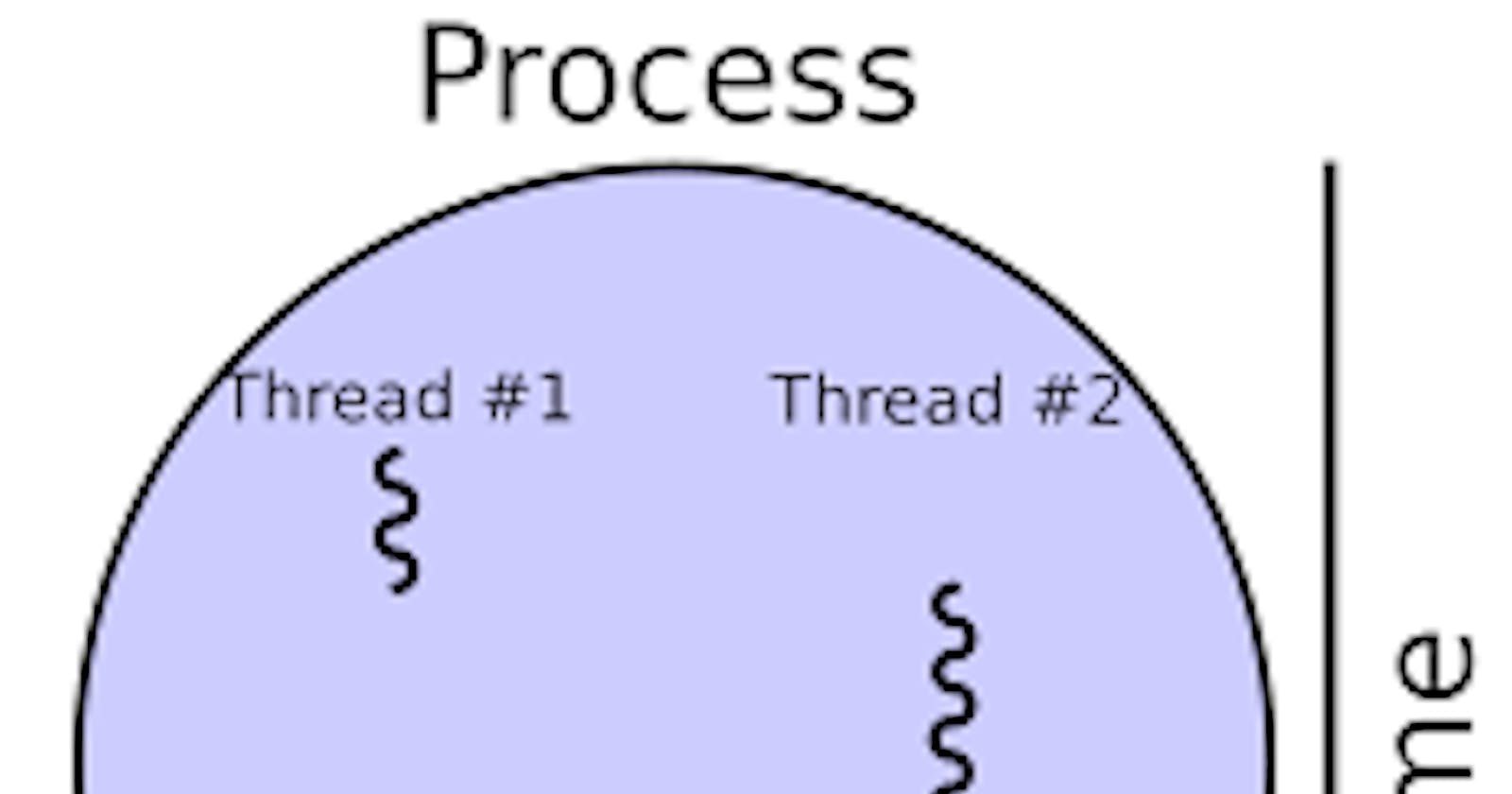Introduction:
When you use software or run a program on your computer, it creates a fundamental unit known as a process. These processes can sometimes multiply, creating a multitude of them in your computer's Random Access Memory (RAM). Each process can consist of one or more threads, with a thread being the basic unit of processing within a process. The specifics of how many processes and threads your application or program employs depend on its requirements and the design choices made during development. In this blog post, we'll explore the concepts of threads and processes and how they function within the computing world.
Processes:
A process can be thought of as an independent instance of a program. Each process operates in its own memory space, which includes registers, a stack, and a heap. The stack is where function calls and local variables are managed, while the heap is shared by all threads within a process and contains dynamically allocated memory objects.
In a multitasking environment, like your computer's operating system, multiple processes can run simultaneously in your computer's RAM. This allows you to run various applications concurrently, such as a web browser, a word processor, and a media player. If one process encounters an issue or crashes, it typically doesn't affect the others. To see a list of running processes on a Linux system, you can use the ps -e command, on a Windows system, open the Command Prompt or PowerShell, type tasklist and press Enter. This command will display a list of all running processes, their names, and process IDs(pid)🖥️.
You might notice some programs appear multiple times, which signifies that the program has multiple processes, for example, Chrome(every tab created on Chrome creates a process, therefore if one tab has an issue, it wouldn't affect the other tab)
Threads:
A thread, on the other hand, is a unit of processing within a process. A process can consist of one main thread or multiple threads, and these threads share the same memory address space. This shared memory space allows threads to communicate efficiently, making multithreading a common practice in modern software development. 👥
While threads share memory space, they have their own registers and stacks for execution. This separation enables threads to work independently within the same process, performing different tasks simultaneously. It's essential to note that while multithreading can significantly improve program efficiency and responsiveness, it also introduces potential risks. One misbehaving thread can impact the entire process, potentially leading to crashes or data corruption. ⚠️
To see a list of running threads of a process on a linux system, you can use the ps -T -p `pid` command (replace pid, with the process id). This command will display a list of all running threads in the specified process, their names, process IDs(pid), and thread IDS(spid) 🖥️.
Interactions Between Threads and Processes:
In practice, processes and threads work together to achieve various goals. Multithreading is commonly used to enhance program efficiency and responsiveness. For instance, in web servers, multiple threads can handle incoming requests concurrently, allowing the server to serve multiple clients simultaneously. Additionally, multithreading is crucial for tasks that require parallelism, like rendering video frames or performing complex data analysis. 🌐
However, it's important to exercise caution when working with threads, as improper synchronization or resource management can lead to issues like race conditions and deadlocks. Such issues can be challenging to diagnose and resolve. ⚙️
Context Switching:
The operating system plays a vital role in managing the execution of processes and threads on the CPU. This management is achieved through a mechanism called context switching. When the operating system switches from one process to another, it saves the current process's state and restores the saved state of the next process. Context switching for processes is relatively expensive, as it involves saving and restoring the entire process's memory space. In contrast, context switching for threads within the same process is less expensive since they share most of their memory space. 🔄
Conclusion:
In the world of computing, understanding threads and processes is fundamental. Whether you're a developer optimizing software or simply a curious user, grasping these concepts can shed light on the inner workings of your computer. Threads and processes are the building blocks that enable your computer to multitask efficiently, but they come with their own set of challenges, especially in multithreaded environments. The choice of how to structure your software – with multiple processes, multiple threads, or a combination of both – depends on the specific requirements of your application.
By mastering the intricacies of threads and processes, you gain valuable insights into the core of modern computing, where efficiency and multitasking reign supreme. So next time you run an application or a program, remember that behind the scenes, threads and processes are hard at work, making your computer experience seamless. 🚀🖱️
